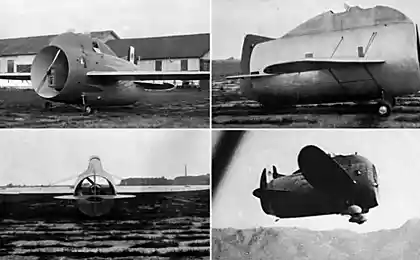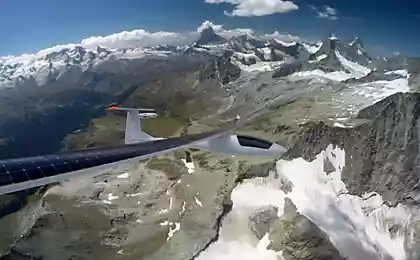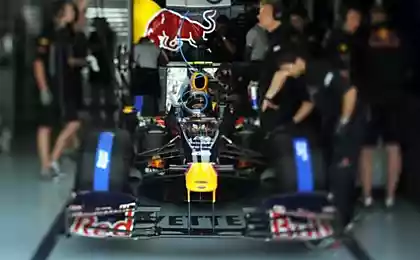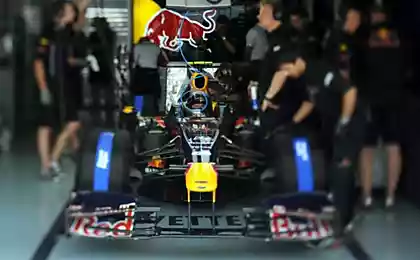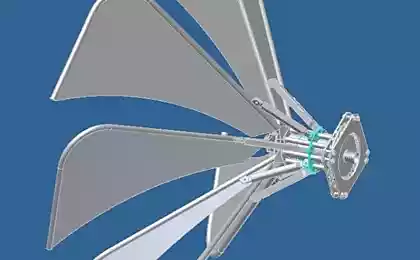507
Solar plane
Solar plane ceased to be a topic for science fiction and into real flight facility. Unfortunately, flying it is only enthusiasts pilots. Weight is the most important parameter for all aircraft, solar aircraft is still a critical indicator, limiting the payload.
The inventor of Sunseeker, one of the world's first manned solar airplanes, Eric Raymond (Eric Raymond) is going to confirm their superiority. His team is working on the construction of the first double solar plane. This appears to be the "first swallow" passenger solar aircraft.

The project was named the Sunseeker Duo. This is the third and most ambitious to date, the project team. Not to be confused with the Sunseeker II, a single plane of Raymond, which before the takeoff of Solar Impulse was the world's only current manned and fit for human flight solar plane.
The design of the Sunseeker Duo is based on a motor glider Stemme S-10, a folding propeller that is removed as the chassis, if not used in flight. From his sample of Sunseeker Duo is different weight. If the standard take-off weight of the Stemme S-10 645 kg, enumerated by the team of Eric Raymond, the Duo glider only weighs 270 kg. As noted by Raymond, his goal is to create a working machine, take-off weight of which, excluding the pilot and passenger will fit into the half weight of the Stemme S-10.
Less weight means greater load. For solar aircraft, storing energy in heavy batteries is very important. Motor Sunseeker Duo is powered by 72 connected in series lithium polymer batteries. Their capacity is enough to provide work dvadtsatikilometrovaya motor at full power for 20 minutes.
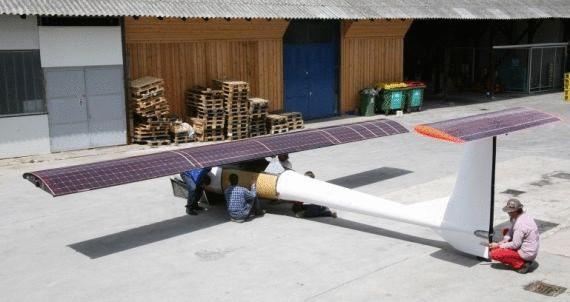
This time is enough for takeoff and climb, then the engine turns off and the batteries are recharged from solar panels installed on the wings of the aircraft, the scope of which 23 meters. Wings for Sunseeker Duo provided the Stuttgart University. Earlier they were used in their solar aircraft project ICARE.
According to calculations of inventors above the clouds within reach of direct sunlight photovoltaic panel plane, the efficiency of which almost 23%, will be able within several hours to refill the energy spent on the takeoff.
To achieve its goals, the team uses the most advanced and the best composite materials based on carbon fibers. Still working on the project, the Sunseeker Duo is not finished. To complete it, as is often the case, not enough money, which is concerned about Eric Raymond. Now the team needs money for electronics and flight tests.
After the construction of twin solar aircraft Sunseeker Duo Eric Raymond intends to make a series of flights around the world to demonstrate the benefits of solar technology.
Source: /users/104
The inventor of Sunseeker, one of the world's first manned solar airplanes, Eric Raymond (Eric Raymond) is going to confirm their superiority. His team is working on the construction of the first double solar plane. This appears to be the "first swallow" passenger solar aircraft.

The project was named the Sunseeker Duo. This is the third and most ambitious to date, the project team. Not to be confused with the Sunseeker II, a single plane of Raymond, which before the takeoff of Solar Impulse was the world's only current manned and fit for human flight solar plane.
The design of the Sunseeker Duo is based on a motor glider Stemme S-10, a folding propeller that is removed as the chassis, if not used in flight. From his sample of Sunseeker Duo is different weight. If the standard take-off weight of the Stemme S-10 645 kg, enumerated by the team of Eric Raymond, the Duo glider only weighs 270 kg. As noted by Raymond, his goal is to create a working machine, take-off weight of which, excluding the pilot and passenger will fit into the half weight of the Stemme S-10.
Less weight means greater load. For solar aircraft, storing energy in heavy batteries is very important. Motor Sunseeker Duo is powered by 72 connected in series lithium polymer batteries. Their capacity is enough to provide work dvadtsatikilometrovaya motor at full power for 20 minutes.

This time is enough for takeoff and climb, then the engine turns off and the batteries are recharged from solar panels installed on the wings of the aircraft, the scope of which 23 meters. Wings for Sunseeker Duo provided the Stuttgart University. Earlier they were used in their solar aircraft project ICARE.
According to calculations of inventors above the clouds within reach of direct sunlight photovoltaic panel plane, the efficiency of which almost 23%, will be able within several hours to refill the energy spent on the takeoff.
To achieve its goals, the team uses the most advanced and the best composite materials based on carbon fibers. Still working on the project, the Sunseeker Duo is not finished. To complete it, as is often the case, not enough money, which is concerned about Eric Raymond. Now the team needs money for electronics and flight tests.
After the construction of twin solar aircraft Sunseeker Duo Eric Raymond intends to make a series of flights around the world to demonstrate the benefits of solar technology.
Source: /users/104
